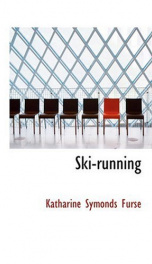Furse Katharine Symonds

Dame Katharine Furse, GBE, RRC (23 November 1875, Bristol – 25 November 1952, London), founder of the English Voluntary Aid Detachment (VAD) force, was born Katharine Symonds, daughter of the poet and critic John Addington Symonds and Janet Catherine North. Her aunt was the famous painter Marianne North. Educated by governesses and her mother, Furse spent most of her early life in Switzerland and Italy. In 1900 she married the painter Charles Wellington Furse, who died four years later leaving her with two young children. In 1909 Furse joined the Red Cross Voluntary Aid Detachment that was attached to the Territorial Army. On the outbreak of the First World War she was chosen to head the first Voluntary Aid Detachment unit to be sent to France. Aware of her administrative abilities, the authorities decided to place her in charge of the VAD Department in London. On the outbreak of World War I in 1914, Furse realised that the existing number of nurses would prove totally inadequate to deal with the enormous amount of work which might be expected, and in September 1914 she proceeded to France with a number of assistants, these forming the nucleus of the VAD force. In January 1915 she returned to England, and the VAD work was then officially recognised as a department of the Red Cross organization. She resigned her position in 1917, and the same year became director of the Women's Royal Naval Service. She received the order of the Royal Red Cross in 1916, and the Order of the British Empire in 1917. Although considered a great success as head of the Voluntary Aid Detachment, Furse was unhappy about her lack of power to introduce reforms. In November 1917, she and several of her senior colleagues resigned. She was immediately offered the post as Director of the Women's Royal Naval Service (WRNS). The Royal Navy was the first of the armed forces to recruit women and since 1916 the Women's Royal Naval Service took over the role of cooks, clerks, wireless telegraphists, code experts and electricians. The women were so successful that other organizations such as the Women's Army Auxiliary Corps (WAAC) and the Women's Royal Air Force (WRAF) were also established. After the war, Furse joined the travel agency of Sir Henry Lunn. Working mainly in Switzerland, she became an expert skier and did a great deal to popularize the sport with British tourists. Her achievements were acknowledged when she became President of the Ladies' Ski Club. Her autobiography, Hearts and Pomegranates was published in 1940. In 1920, Furse formed the Association of Wrens and this led to her becoming head of the Sea Rangers and for ten years, from 1928 to 1938, was director of the World Association of Girl Guides and Girl Scouts whose constitution she drafted. Her last public appearance was at the Conference of Former Scouts in London in September 1952. She died in London, two days after her 77th birthday. This article incorporates text from the Encyclopædia Britannica, Eleventh Edition, a publication now in the public domain.
do you like this author?
What readers are saying
What do you think? Write your own comment on this book!
write a commentWhat readers are saying
What do you think? Write your own comment on this author!
write a commentBook list

Ski-running
Series:
Unknown
Year:
Unknown
Raiting:
3.5/5
The first introduction of Skis into Switzerland, which I have been able to trace, was by the monks of St. Bernard, who obtained some pairs from Norway in 1883, thinking that they might be useful in their work of mercy, rescuing pedestrians who were in difficulties on the Pass. About 1887 Colonel Napier came to Davos bringing with him a Norwegian man-servant and a pair of Skis. Mythical tales were told of the way this man slid down the slopes from chalet to hotel, carrying a tea tray on his shoulder. --This text refers to the Paperback edition.
Show more
add to favoritesadd In favorites
Book list

Ski-running
Series:
Unknown
Year:
Unknown
Raiting:
3.5/5
The first introduction of Skis into Switzerland, which I have been able to trace, was by the monks of St. Bernard, who obtained some pairs from Norway in 1883, thinking that they might be useful in their work of mercy, rescuing pedestrians who were in difficulties on the Pass. About 1887 Colonel Napier came to Davos bringing with him a Norwegian man-servant and a pair of Skis. Mythical tales were told of the way this man slid down the slopes from chalet to hotel, carrying a tea tray on his shoulder. --This text refers to the Paperback edition.
Show more
add to favoritesadd In favorites
What readers are saying
What do you think? Write your own comment on this author!
write a commentGenre
if you like Furse Katharine Symonds try:
readers also enjoyed
What readers are saying
What do you think? Write your own comment on this author!
write a commentGenre
if you like Furse Katharine Symonds try:
readers also enjoyed
Do you want to exchange books? It’s EASY!
Get registered and find other users who want to give their favourite books to good hands!

